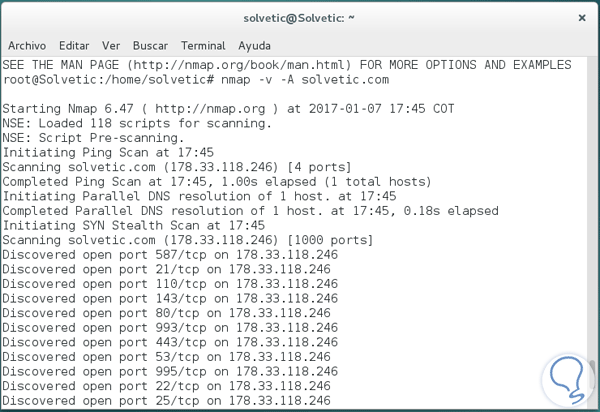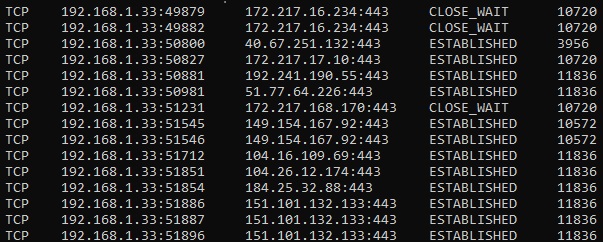

- #Java ver puertos abiertos how to#
- #Java ver puertos abiertos install#
- #Java ver puertos abiertos update#
- #Java ver puertos abiertos windows#
Next, we will see how to fully configure the time and date in Ubuntu 18.04. The timesyncd command replaces the ntpdate and chrony commands with much more optimal integrated functions for its performance since timesyncd regularly checks the time services to keep local time synchronized and stores time updates locally, so that after rebooting the system they are applied to allow everything associated with the date and time to be correct. When we use Ubuntu 18.0, this system has an integrated and activated time synchronization by default, taking the systemd timesyncd service as a reference. system, communication between applications such as databases, failures and errors in records and many other associated problems that may be imperceptible to us as administrators.
#Java ver puertos abiertos update#
Related Articles Commands to configure and synchronize time, date and time zone in Ubuntu 18.04 One of the most delicate and important administration issues, although sometimes it does not seem that it is, at the server level, it is related to a correct configuration and time synchronization since any error in seconds, minutes or hours can trigger update errors. With these methods we can know the open ports in Linux or Windows. There we can learn more about the service or finish it if necessary. Now, with this PID, we can go to the Task Manager and in the Details tab know what is the service involved: We can see the results much more organized.
#Java ver puertos abiertos windows#
To know the open ports in Windows operating systems we must access the command prompt as administrators, right click / Run as administrator, and in the window displayed run the following line: netstat -abĪlternatively, Windows allows us to display the results by PID which simplifies the administration, in this case we must execute the following line: netstat -aon In this way we can know the open ports in Linux. To find the name of the process we will use the following syntax: ps -p PID -o comm =
#Java ver puertos abiertos install#
For its installation we will use any of the following lines as the case may be: sudo yum install psmisc (Redhat / CentOS) sudo apt install psmisc (Debian / Ubuntu) sudo dnf install psmisc (Fedora 22 and higher) The syntax for use is as follows: merger port # / tcp Thanks to this command we can deploy the PIDs associated with the open ports in Linux. We can see in detail the data of the process, user, etc. For its installation we will use the following options: sudo yum install lsof (RedHat / CentOS) sudo apt install lsof (Debian / Ubuntu) sudo dnf install lsof (Fedora) Its execution includes the following syntax: lsof -i: port

Lsof (LiSt Open Files) is used to deploy all open ports in Linux. n: indicates that it displays numerical addresses.l: Tell netstat to only display the listening ports.It is available on Windows and Linuxįor its installation we can execute the following commands: sudo yum install net-tools (RedHat / CentOS) sudo apt install net-tools (Debian / Ubuntu) sudo dnf install net-tools Fedoraįor its execution we must know the port number to analyze and we will use the grep command to display the information using the following syntax: netstat -ltnp | grep -w ': port #' The result will be as follows: This netstat (Network Statistics) command is often used to display information associated with the network. We can make use of three practical applications for this, these are:

Next we will see how we can know the open ports in Linux and Windows operating systems. Ī port indicates the end point of any network communication and is associated with a specific program or service of the operating system. One of the support and management tasks that we can perform constantly is to check the open TCP ports in the system since in this way we can have the precise control over which service is using that port.


 0 kommentar(er)
0 kommentar(er)
